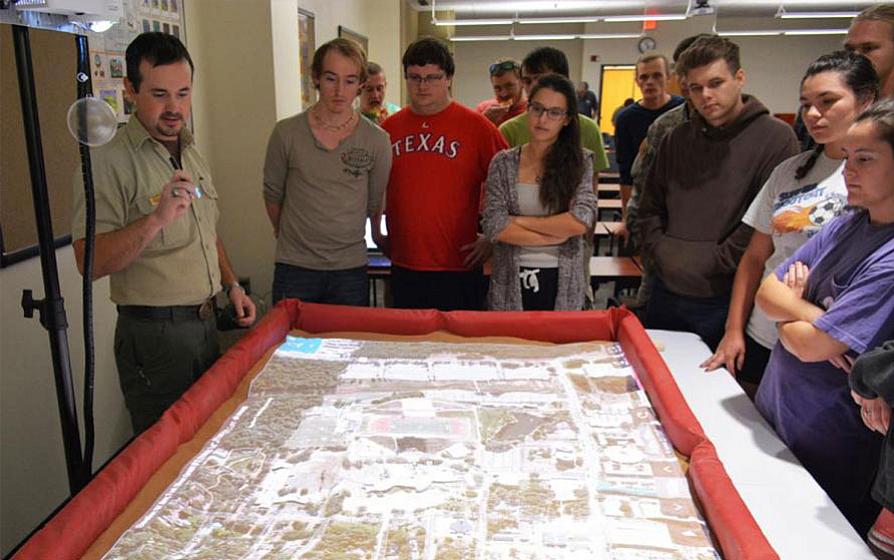Geospatial science research projects
As a geospatial science student at SFA, you’ll have the opportunity to work side-by-side with faculty members on exciting research projects. Help gather data and build a working database of a national forest. Use LiDAR technlology to unlock the secrets of historic places such as Texas’ oldest road.
Check out some of our past projects below.
Experimental Forest geodatabase
Students are conducting a multi-phase research project using LiDAR technology in the Stephen F. Austin Experimental Forest. The research will help students determine the accuracy of data gathered using Light Detection and Ranging technology, and it will also help them build a database of each unique tree in the forest. Eventually, they will use the information in this database to run simulations of common forest practices such as thinning.
El Camino Real de los Tejas
El Camino Real de los Tejas is one of Texas’ oldest trails, and it received official designation as a National Historic Trail in 2004. Students in the Arthur Temple College of Forestry and Agriculture are assisting with efforts to identify all significant natural, historical, and cultural resources of the trail through tools such as LiDAR technology.
Counting mistletoe with a drone
American mistletoe is a hemiparasitic plant that infects deciduous trees across the United States. The students assisted in using an unmanned aircraft system, commonly known as drone, to detect and quantify mistletoe. They found more mistletoe plants were detected compared to a ground-count survey. This information can help researchers and managers accurately predict the parasite load of trees to produce a more accurate hazard rating as well as help quantify the resource availability for wildlife in urban environments. The data are also made available on iNaturist, an online platform that allows contributions from citizen scientists.
 Axe ’Em, Jacks!
Axe ’Em, Jacks!
